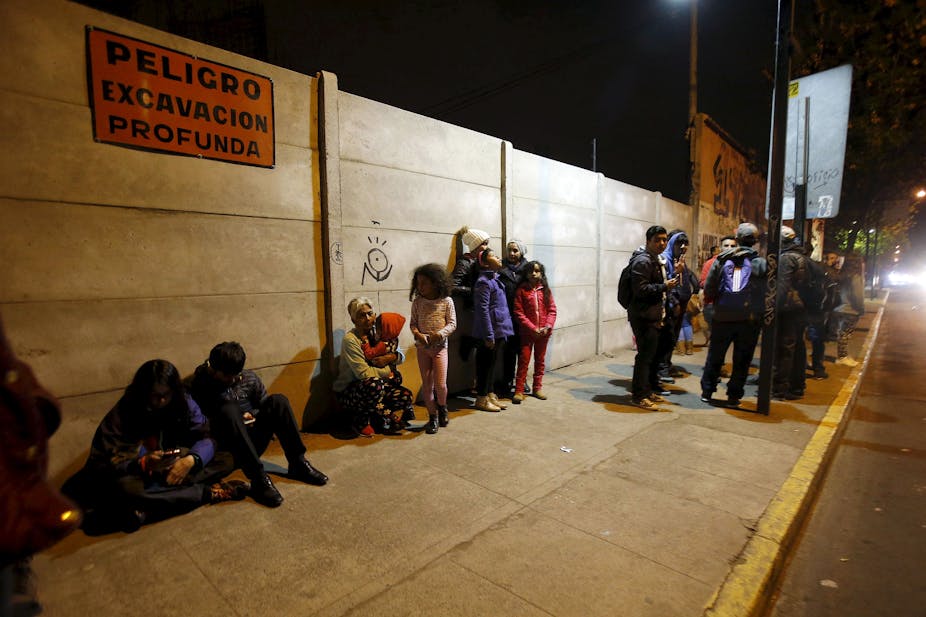The 8.3-magnitude earthquake that struck off Illapel, Chile, on Thursday morning (Australian time) has once again highlighted the importance of tsunami warning systems in the world’s oceans. The earthquake occurred along the interface of the Nazca and South American Plates in Central Chile.
Latest reports indicate that five people have been killed and millions evacuated.
A sudden slip along this fault zone led to movement of the sea bed. This in turn generated a tsunami with 4.5-metre waves reported on the Chilean coast.
A Pacific-wide tsunami alert has been issued by Pacific Tsunami Warning Center (PTWC) in the United States based on earthquake data from the United States Geological Survey. The PTWC is one of a worldwide network of tsunami warning centres.
The tsunami warning system
In Australia the Bureau of Meteorology is responsible for tsunami warnings. Alerts are issued after large, shallow earthquakes under the sea bed that have the potential to generate tsunamis. Initially these warnings are only issued for areas near where the earthquake occurred and sea level data is monitored to determine whether a tsunami has actually been generated.
If it has, and it is assessed as posing a potential long-distance hazard, a warning is then issued either for a larger region, or in this case for the entire Pacific.
Regional and ocean-wide tsunami warnings are crucial for saving lives in areas at some distance from the earthquake that caused them.
International cooperation in this area began following the 1960 Chile earthquake which, at magnitude 9.5, is the largest ever recorded. It triggered a Pacific-wide tsunami that caused deaths as far away as Hawaii and Japan.
Following the devastating Boxing Day earthquake in Sumatra in 2004 a tsunami warning system was developed for the Indian Ocean. The tsunami from that event killed 230,000 people in Indonesia, Thailand, Sri Lanka, and India.
High-tech warnings
Although tsunami alerts can be issued within minutes of an earthquake occurring, the most effective warning for nearby communities is the earthquake itself.
Education is crucial in saving lives so that people living or visiting coastal areas know to evacuate immediately to higher ground if they feel a large earthquake. If higher ground is not nearby, another option is to evacuate vertically, by going upstairs in well-constructed multi-storey buildings.
Relatively new tools for reducing risk are earthquake early warning systems that indicate that a large earthquake is actually happening, such as those used in Japan and in Chile. These work by having a network of sensors near major fault zones. These sensors record the occurrence of an earthquake and if a sufficient number of them are triggered a computer algorithm automatically estimates the earthquake’s magnitude and location.
This information is sent to more distant locations and arrives ahead of the seismic waves that cause the shaking. Some warnings are broadcast across mobile phone networks. The time difference increases with distance but even a few seconds warning can allow for automated responses such as sending lifts to the nearest floor, stopping bullet trains, and shutting down natural gas distribution.
Refining the algorithms for earthquake early warning to better estimate the earthquake size and to reduce false alarms is an active area of research in the earthquake community.
Over the next few years these types of warnings are likely to become routine internationally, already it is possible to download earthquake early warning apps onto smart phones. The next step will be training people in how to respond to a few seconds warning of an impending large earthquake.

